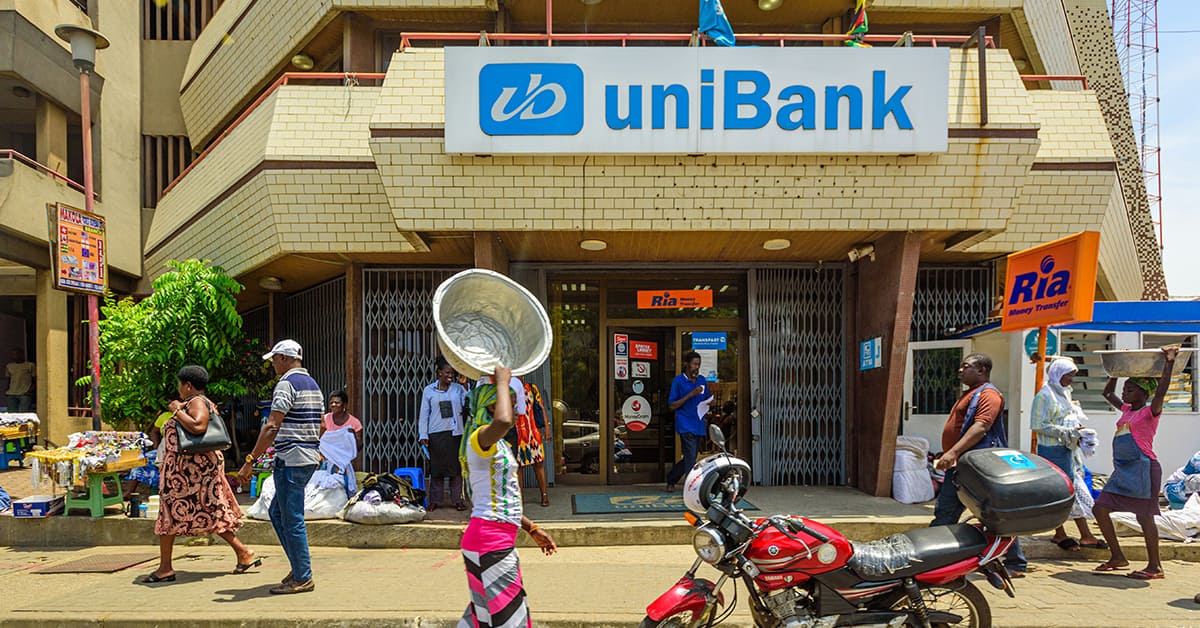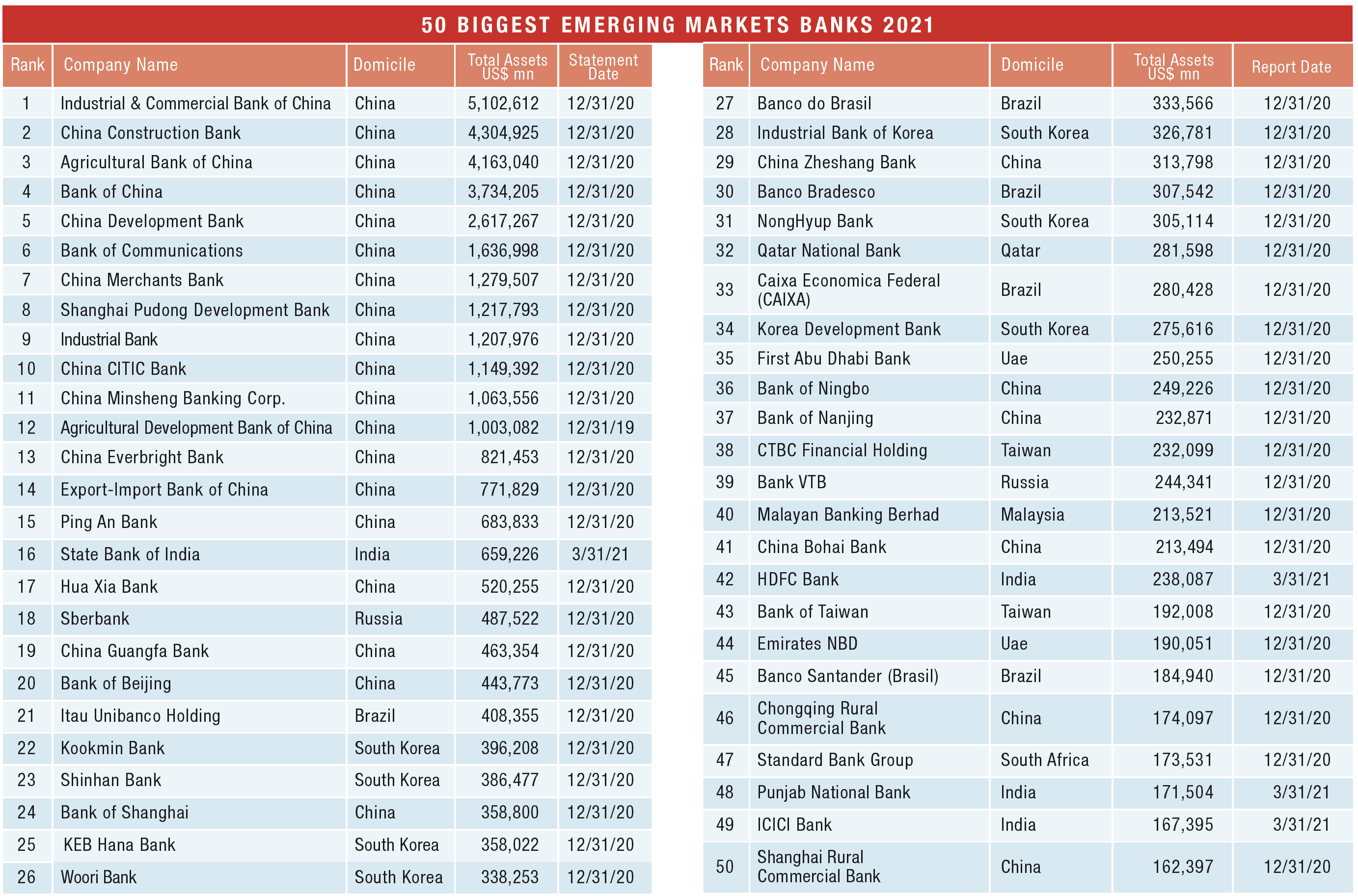Last year many of the biggest emerging-markets banks got even bigger—but not all.

China’s dominance in our Top 50 Biggest Emerging Markets Bank rankings continues to expand as Chinese banks now occupy 25 positions, up from 23, representing 82% of the aggregate assets of this list. New entrants include China Bohai Bank (No. 42), Chongqing Rural Commercial Bank (No. 46), and Shanghai Rural Commercial Bank (No. 50), which squeezed out domestic peer Guangzhou Rural Commercial Bank.
Will it last? Robust asset growth in the Chinese banking sector has occurred for years, helping to fuel the country’s enormous expansion. Accustomed to growth rates in the high single digits, China’s economy was tempered by the pandemic, falling to 5.9% in the third quarter of 2021. Tremendous excess capacity exists in real estate following years of overbuilding, and the associated rising non-performing loans may result in sharply higher credit losses.
In addition to Guanzhou Rural, India’s Axis Bank, National Commercial Bank in Saudi Arabia and BNDES in Brazil were squeezed out this year by the expansion of the Chinese banks. However, Punjab National Bank in India is a new entrant following solid asset growth and joins domestic peers State Bank of India (No. 16), HDFC Bank (No. 38), and ICICI Bank (No. 49). South Korea accounts for seven banks in the rankings with average asset growth rate of 17% for these entities boosting both Kookmin Bank (No. 22), KEB Hana (No. 25), and Woori (No. 26) two places in our rankings.
While all countries have been devastated by the pandemic, Brazil has been forced to endure a comparatively greater magnitude of hardship and suffering, with tremendous human loss and economic deterioration. Consequently, the five Brazilian banks in our rankings—Itau Unibanco, Banco do Brasil, Banco Bradesco, Caixa Economica Federal, and Banco Santander (Brasil)—have experienced an average balance sheet contraction of 10%.




